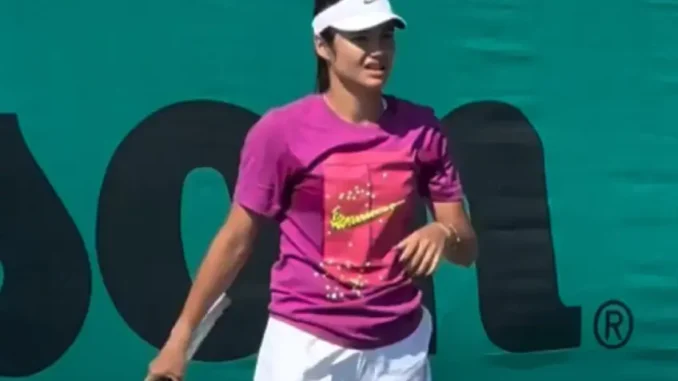
In the high-stakes world of professional tennis, the synergy between a player and their coach is often pivotal to success. Emma Raducanu, the British tennis sensation who captured global attention with her stunning 2021 US Open victory, now faces a critical juncture in her career following the departure of her coach, Nick Cavaday. As she navigates this transitional period, former British No.1 Laura Robson has offered insightful advice, emphasizing the importance of a deliberate and thoughtful approach to selecting a new coach.
Cavaday’s departure, after a 14-month partnership, was driven by health considerations and a desire to spend more time at home. This development leaves Raducanu, now 22, at a crossroads, underscoring the necessity of making a judicious choice in her next coaching appointment. Robson’s counsel is particularly pertinent, given the scrutiny that has accompanied Raducanu’s coaching decisions in the past.
Reflecting on the situation, Robson remarked, “I don’t think she’s going to rush into it. Just from an outsider’s point of view, I don’t think she would want to rush into it. It’s got to be the right person because I know if she goes for someone and then ends up changing them again quickly, everyone will go nuts.” This perspective highlights the potential repercussions of a hasty decision, both in terms of public perception and the inherent instability it could introduce into Raducanu’s career.
Currently, Raducanu is training in Abu Dhabi, working with fitness coach Yutaka Nakamura and temporary coach Roman Kelecic. Robson acknowledges the value of this interim arrangement, noting, “She’s got Yutaka with her… Also, he can hit a bit… If he tried to tell you something…?” This setup provides Raducanu with a stable foundation as she contemplates her next move.
Raducanu herself has expressed a commitment to patience in this process. Ahead of the Abu Dhabi Open, she stated, “It’s a decision that I… I think that’s why I haven’t necessarily… And I think this period where I… So I think I’m using this time… I’m not too sure yet right now…” This introspective approach suggests a maturity and awareness of the complexities involved in forming a successful coaching relationship.
The role of a coach in a professional tennis player’s career extends beyond technical instruction; it encompasses strategic planning, mental conditioning, and often serves as a source of emotional support. A harmonious player-coach relationship can significantly enhance performance, while discord or frequent changes can disrupt a player’s progress. Raducanu’s history of multiple coaching changes has been a focal point of media attention, adding pressure to her current decision-making process.
Robson’s advice underscores the importance of stability and the potential pitfalls of a rushed decision. She emphasizes that finding the right fit is crucial, not only to avoid public scrutiny but also to ensure that Raducanu’s development remains on an upward trajectory. The tennis community and fans alike are keenly observing how Raducanu manages this phase of her career, recognizing that her choice of coach could have long-term implications for her performance and legacy in the sport.
In the interim, Raducanu’s collaboration with Nakamura and Kelecic provides her with continuity and support. Nakamura’s extensive experience on the tour offers valuable insights, and his ability to engage in practice sessions adds a practical dimension to their partnership. This period also affords Raducanu the opportunity to reflect on her previous coaching experiences, assess what methodologies resonate with her, and identify the qualities she seeks in a long-term coach.
The process of selecting a coach is deeply personal and varies among athletes. Some prioritize a coach’s track record with other players, while others seek a mentor who aligns with their personal values and communication style. For Raducanu, who has experienced a rapid ascent to stardom, finding a coach who can navigate the pressures of high expectations and media scrutiny is likely paramount.
As Raducanu deliberates her next steps, the broader tennis community offers a wealth of potential candidates, each bringing unique strengths. The challenge lies in identifying a coach whose vision aligns with Raducanu’s goals and who can foster an environment conducive to growth, resilience, and sustained success.
In conclusion, Emma Raducanu stands at a pivotal point in her career, where the decision of selecting a new coach carries significant weight. Laura Robson’s advice to proceed with caution and deliberation serves as a prudent reminder of the complexities involved. By taking the time to find the right fit, Raducanu can establish a partnership that not only enhances her performance on the court but also supports her overall development as a professional athlete. The tennis world watches with anticipation, hopeful that this period of reflection will lead to a fruitful and enduring collaboration.
Leave a Reply